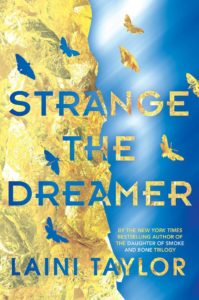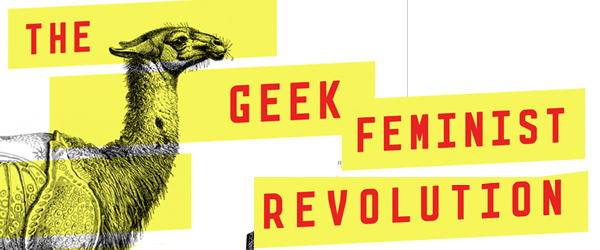“You’re a storyteller. Dream up something wild and improbable,” she pleaded. “Something beautiful and full of monsters.”
“Beautiful and full of monsters?”
“All the best stories are.”
Dreams, nightmares, myths, and legends come to life in Laini Taylor’s Strange the Dreamer through beautiful prose and epic world-building. Lazlo Strange, an orphan raised by monks to become a librarian, falls deeply in love with the mysterious city of Weep. While he fawns over fairy tales and magic, other people ridicule him for his bizarre infatuation. It isn’t until Thyon Nero, the “golden godson” alchemist, takes interest in Lazlo’s written works about the mysteries of Weep. The two could not be any more different: the privileged scholar who’s interested in the material and the lowly librarian who chases after the fantastic.
 I was already familiar with Taylor’s masterful writing after reading Daughter of Smoke and Bone back in high school. For some reason, though, I couldn’t bring myself to read the other books in the trilogy. Strange the Dreamer, on the other hand, captivated me with the prologue alone. The words soaked in almost effortlessly — this goes for the entire book — and I think it’s the pure fantasy quality that allowed Taylor’s writing to shine even brighter than her previous, more contemporary, fantasy trilogy.
I was already familiar with Taylor’s masterful writing after reading Daughter of Smoke and Bone back in high school. For some reason, though, I couldn’t bring myself to read the other books in the trilogy. Strange the Dreamer, on the other hand, captivated me with the prologue alone. The words soaked in almost effortlessly — this goes for the entire book — and I think it’s the pure fantasy quality that allowed Taylor’s writing to shine even brighter than her previous, more contemporary, fantasy trilogy.
The first couple of lines stole my attention, planting questions that drove my desire to explore where I’d find the answers:
[blocktext align=”center”]On the second Sabbat of Twelfthmoon, in the city of Weep, a girl fell from the sky. Her skin was blue, her blood was red.[/blocktext]
What kind of calendar am I following? Why is there a city called Weep? Why and how is there a bleeding, blue-skinned girl falling from the sky? I wanted to learn more about the blue-skinned girl. I actually thought I was going to meet her in the first chapter.
Lazlo Strange comes in instead.
I had a hard time getting through Lazlo and Thyon’s backstories, especially since they’re in the beginning, because my mind was preoccupied with the question of when am I going to meet the blue-skinned girl? Don’t get me wrong — Lazlo and Thyon are well-developed characters. However, in a room full of men, you naturally wonder where the women are.
The first mention of women is from Master Hyrrokkin, an old librarian who encourages Lazlo to find a young woman for company instead of books. He tells the young man:
“Look for kind eyes and wide hips, do you hear me? Hips, boy. You haven’t lived until you’ve laid your head on a nice, soft—”
Yeah, I was glad he didn’t finish his sentence.
The Tizerkane warriors’ arrival introduced the fantasy element that I felt was lacking after the prologue. A couple of scholars’ baffled comments about there being female warriors made me remember that these are men… surrounded by men. They have typical preconceptions of women, and they obviously don’t get out very much. I rubbed my temples at this part, going, oh god. It wasn’t until 80-something pages later when the blue-skinned girl, Sarai, finally made her appearance and saved me from the slow and slightly irritating beginning.
Sarai is one of the few surviving children of fallen gods who were raised by ghosts — a wild concept, right? At first, I couldn’t wrap my head around this, but as I learned more about Sarai, Ruby, Feral, Sparrow, Minya, and their unique and sometimes terrifying powers, I accepted the idea. Sarai is known as the “Muse of Nightmares,” and her power is what you’d expect from the title. She hates using her power, but must do so for everyone’s survival. A war brews between the “Godspawn” and humans, and horrific stories of when the gods lived still haunt both sides.
After the introduction of the Godspawn, the story goes back and forth between Lazlo, Sarai, and sometimes Thyon. One of my favorite characters is Calixte, who joins the expedition to the city of Weep with Lazlo, Thyon, and a few other scholars, all of whom were selected by Eril-Fane, the legendary “Godslayer” and leader of the Tizerkane warriors. She’s the only LGBTQ+ character I came across in the book, and her defiance against gender expectations swept away all the slight irritations I had in the beginning.
I did expect romance, but I didn’t expect for it to be so… unwelcome. I couldn’t even focus on it because I was so enraptured by everything else. I still had questions that needed answers, yet the romance was almost like an intrusion to the overarching plot. Lazlo and Sarai go from intricate and unique individuals to lovers who need each other to keep the story going. At one point, I was more interested in Thyon even though his chapters were shorter than Lazlo and Sarai’s — and Thyon doesn’t have the best personality to begin with. Strange the Dreamer will be a duology series, and I feel that Taylor should’ve saved the romance for the sequel.
Despite my gripes, I still loved reading the book. My journey was as mysterious and thrilling as Lazlo’s when he discovers the city of Weep, a place he only ever dreamed about. I found parts of myself in Lazlo, Thyon, and Sarai: the part who keeps on dreaming, the part who has no time to dream, and the part who fears turning dreams into nightmares. I’d recommend this book to anyone who loves poetic prose — or Taylor’s writing — and the uncertainty that lingers in between love and hate, reality and fantasy, and dreams and nightmares.
4.5 out of 5 stars






